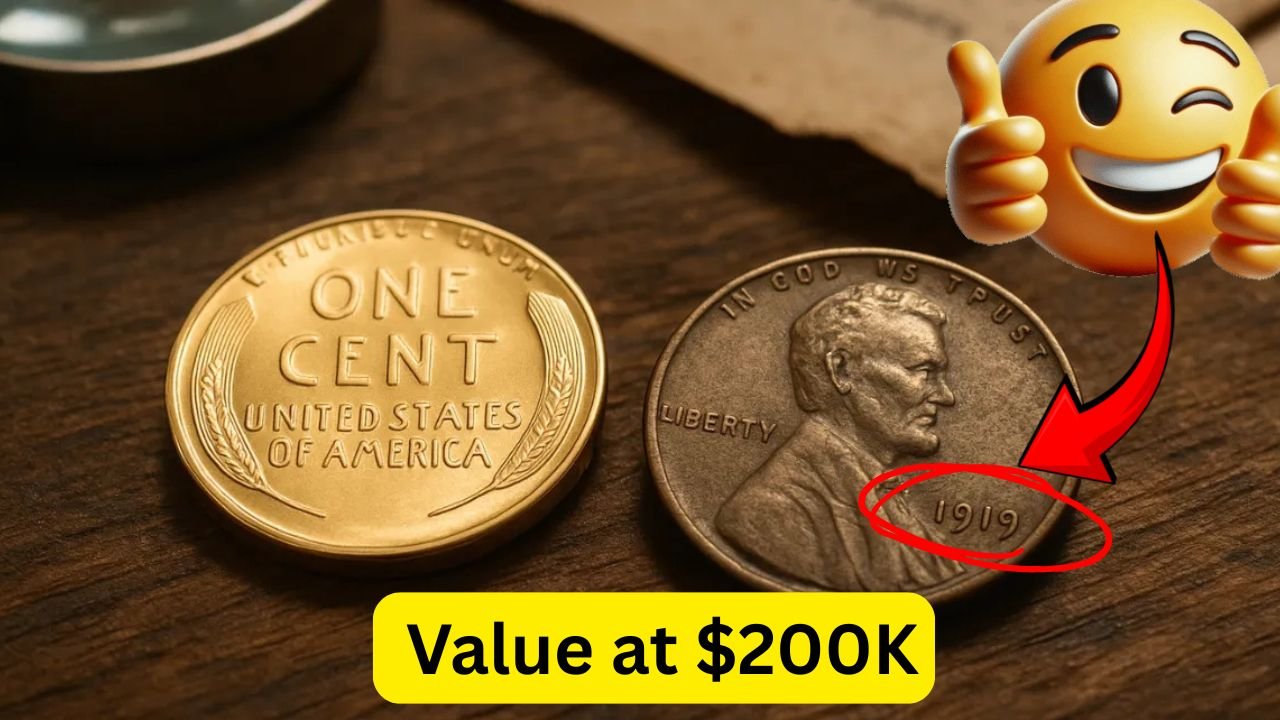The Lincoln Wheat Penny Valued at $200K: The Lincoln Wheat Penny is a one-cent coin that was first introduced in the United States in 1909. It features the face of President Abraham Lincoln on the front and two stalks of wheat on the back, which is why it’s called the “Wheat Penny.” These coins were made until 1958, after which the design on the back was changed to the Lincoln Memorial. Though it’s just a penny, some versions of the Wheat Penny have become incredibly valuable over the years.
Why Is One Penny Worth $200,000?
Not all Wheat Pennies are worth a fortune, but a few rare versions are so unique that collectors are willing to pay thousands—or even hundreds of thousands—of dollars for them. One of the most famous is the 1943 copper Lincoln Wheat Penny. In 1943, most pennies were made of steel due to wartime metal shortages. However, a small number were accidentally made using copper. Only a handful of these copper coins from 1943 still exist today. Because of their rarity and historical significance, they can fetch up to $200,000 or more at auctions.
How Can a Penny Like This Still Be in Circulation?
You might be wondering how a coin worth so much money could still be in everyday circulation. The answer is, technically, it’s possible but extremely rare. These coins were originally minted for regular use, so a few might have slipped through unnoticed. Over time, many have been lost, stored away in collections, or discovered by experts. But there’s still a small chance that someone could come across one in loose change. That’s what keeps collectors excited—there’s always the hope of finding one in a jar of old coins or in your pocket after shopping.
What Makes These Coins So Special?
It’s not just age that makes these pennies valuable. It’s usually a combination of factors like rarity, minting errors, metal composition, and overall condition. The 1943 copper penny is a perfect example. It wasn’t supposed to be made in copper that year, but a few copper blanks (coin-shaped pieces of metal) were left in the machines by mistake. This small error turned them into a treasure for collectors. Even more exciting, other rare varieties like the 1909-S VDB penny and certain doubled-die versions are also highly valuable.
Is It Possible That You Have One?
If you have a jar of old coins at home, it might be worth checking through it carefully. Look for the year 1943 on a Lincoln penny. If it sticks to a magnet, it’s made of steel, which is normal for that year. But if it doesn’t stick, you might be holding a copper version—and that could be worth a lot of money. Of course, to be sure, you’d need to get it checked by a professional coin grader or appraiser. Still, the idea that such a valuable coin might be hiding in plain sight is what makes this story so fascinating.
A Quick Look at Rare Lincoln Wheat Pennies and Their Value
Here’s a table showing a few of the rarest and most valuable Wheat Pennies ever discovered:
| Year | Type or Feature | Estimated Value |
|---|---|---|
| 1909 | 1909-S VDB | $700–$2,000+ |
| 1914 | 1914-D | $150–$5,000+ |
| 1922 | No D Mintmark (Weak Strike) | $500–$10,000+ |
| 1931 | 1931-S | $100–$1,000+ |
| 1943 | Copper (instead of steel) | Up to $200,000 |
Are There Other Valuable Pennies?
Yes, besides the 1943 copper Wheat Penny, there are many other old pennies that can be worth hundreds or thousands of dollars. Some have minting errors, while others were just made in smaller quantities, which makes them rare today. It’s a good idea to learn about these coins if you’re interested in coin collecting.
What Should You Do If You Think You Found One?
If you find an old penny that looks unusual or is dated 1943 and made of copper, don’t rush to spend it! Hold onto it and get it checked by a coin expert or a coin grading service. They can tell you if it’s real, how rare it is, and how much it might be worth. Even if it turns out to be a common penny, it’s still fun to explore the history behind it.
FAQs
Q: How can I tell if my 1943 penny is copper or steel?
A: Use a magnet. Steel pennies will stick; copper ones won’t.
Q: Can I still find a valuable Wheat Penny in my change?
A: It’s very unlikely but still possible. That’s part of the excitement!
Q: Why were most 1943 pennies made of steel?
A: During World War II, copper was needed for war materials, so the U.S. Mint used steel instead.
Q: What does “VDB” mean on the 1909 penny?
A: It stands for Victor David Brenner, the artist who designed the coin.
Q: Should I clean an old coin I think is valuable?
A: No, cleaning can damage the coin and reduce its value. Always have it checked first.




